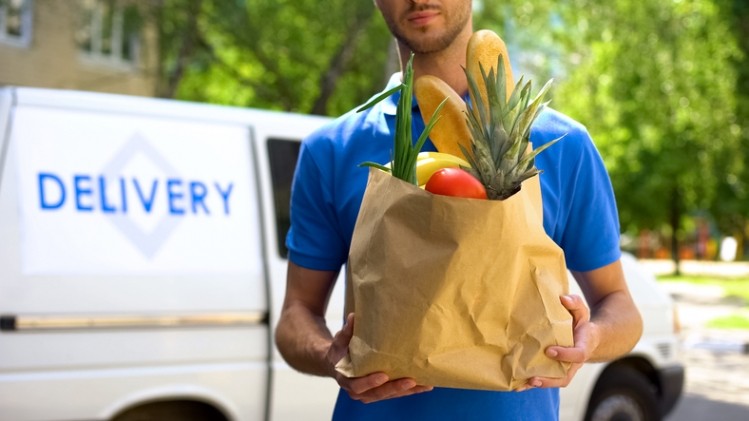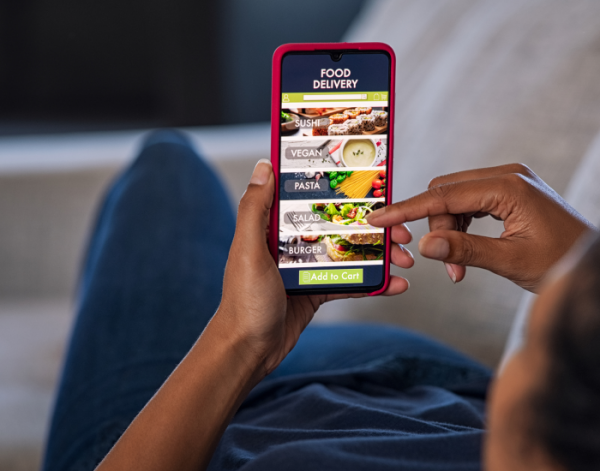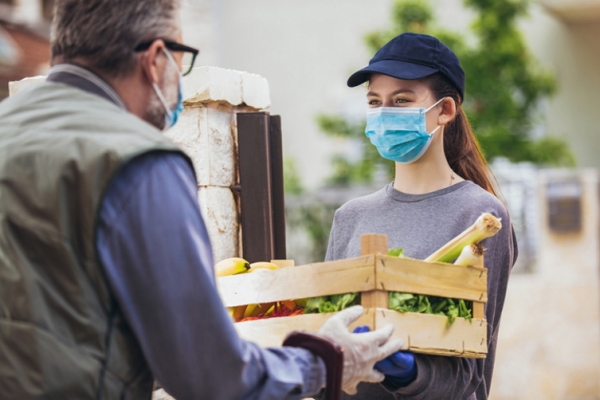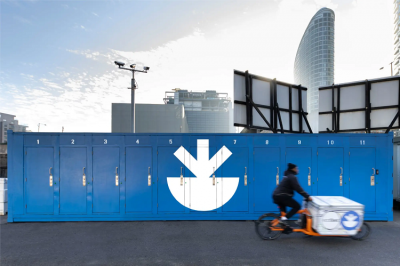‘Our mission has been to reimagine same day delivery’: Gophr CEO talks rapid grocery delivery

Swiftly evolving consumer shopping habits have contributed to the phenomenal growth of the rapid grocery delivery (RGD) sector. Research from IGD places the value of rapid delivery at £1.4bn in the UK alone – and the sector is expected to grow to £3.3bn in the coming years. Already, one in three shoppers in the market have used rapid delivery.
According to Seb Robert, founder and CEO of same day delivery business Gophr, this speedy uptake can be linked to changes that were sparked by COVID-19 lockdowns.
“The pandemic was a perfect opportunity for the RGD model to prove itself. Supermarket slots were almost impossible to come by and shopping had become fraught with real danger, especially if you were shielding. Stuck at home, the promise of groceries delivered in less than 30 minutes was a novelty; it alleviated the boredom and the behaviour quickly became a habit for some,” he told FoodNavigator.
He characterises this as a second chance for delivery tech specialists, which have previously experienced something of a false dawn. However, Robert also predicts more challenging times ahead and suggests that we are likely to witness a period of consolidation coming down the line.
“People returning to the workplace, even if only part time, is likely to impact the appetite for rapid grocery delivery. Plus, the cost of living crisis means people are looking to cut costs where they can so it might push people to only use these services for urgencies only.
“During the restaurant delivery wars of 2014-2018 so many companies failed and so much VC cash was burned that it made it very difficult to raise funds for anyone in the delivery space afterwards. It really felt like the pandemic brought that era roaring back. Given that history tends to rhyme, my expectation is that we’ll see a lot of the smaller players fail and get snapped up - it’s happening already - and the large ones win out and consolidate,” he predicted.
So, what will it take to emerge an RGD winner?
Unlike other rapid delivery businesses – who are grabbing headlines and innovating their offers but burning through cash fast - Gophr plays outside this space by providing a service that allows the grocery multiples and food or FMCG brands to offer similar levels of delivery convenience and immediacy to the consumer. Robert believes forging links to the large supermarkets to leverage economies of scale will be one important unlock. Gophr works with businesses like The Co-op as well as meal kit delivery business HelloFresh.
“We work with existing supermarkets and believe that’s ultimately the way to go. High street retail spaces have to wrestle with whether they want their spaces to evolve towards dark stores or experiential spaces, but supermarkets are better placed to do both. They already have the infrastructure and buying power to make the unit economics work.”
Robert notes that larger rapid delivery providers are also starting to work with supermarket chains. However, he told us, the dynamic of working with these big customers is also going to evolve. “Larger players are already starting to announce partnerships with supermarkets but they need to understand that supermarkets are only going to be comfortable with those RGD guys holding on to the receipts, the customer contact information and their margin for so long.”
The ’sweet spot’ for rapid delivery
As in any other consumer facing segment, Robert explained, the rapid delivery sector needs to understand its consumer need state. He said there is ‘definitely’ shopper demand: “People do not want stuff delivered slower.” But what exactly do they want? Is rapid delivery poised to disrupt the weekly shop?
“Where RGD comes into its own is late at night when people are looking for beer, tequila, cigarettes etc. That gets expensive, but it's okay because people are willing to pay a premium at that point. Then there are the ‘everyday emergencies’, well captured in ads, where you’re prepping a meal but forgot a few vital ingredients, and it’s just not possible or practical to pop out to the shops,” Robert observed.
“Aside from that, there’s a whole debate around where the sweet spot lies when it comes to delivery windows. Is any grocery basket or item so urgent that it needs to be delivered in 15 minutes, beyond the scenarios just described? What we’re finding at Gophr, with our focus on same day delivery and sitting outside of the RGD model, is that having a specific delivery window within the same day/half day that you ordered generally covers 99% of requirements. That said, we tend to see pretty large shopping baskets as opposed to just getting a few items.
“If you step back and assess the range of sector innovations driven by the pandemic, the delivery format we think will emerge as successful is the same day, top-up shop where customers get their delivery in an hour or so from a local store. It fits well into the rise of the local community and the convenience mindset that seems to be sticking post pandemic. It works for couriers too who are not continually driving against the clock. And it adds up from a commercial and sustainability perspective.”
Robert said this option is one that retailers like Asda and The Co-op are exploring, whether they are outsourcing to specialists like Gophr or developing their own in-house operations.
Nurturing a ‘thriving’ ecosystem
Gophr was set up with a philosophy that the service should work for everyone that uses it, the courier themselves, the clients and the end user, the consumer. “Our mission has been to reimagine same day delivery to make it work better for everyone involved; more efficient for businesses, more convenient for their customers, and more profitable for couriers. The delivery business, particularly last-mile, is still a people business. We are able to scale up because the platform we have built enables couriers to perform ‘better’, because better couriers deliver better outcomes.”

The model developed by Gophr therefore addresses the challenging cost structure faced by rapid grocery delivery providers – which face higher costs that are often not covered by delivery charges.
“On top of all the other challenges we’re basically doing all of this for the cost of the delivery itself. We run our business the way a traditional courier company does, so we view the RGD work we do much like a courier company does; these are our enterprise clients that get drivers on the road but are generally not the most profitable. You need other clients in the mix to make that happen. So the next step is to start building a highly diverse, thriving ecosystem of work around that enterprise volume in order to drive up capacity management and enable the driver to earn more, secure ongoing revenue and keep them engaged and motivated for the long term.
“Most RGD/restaurant delivery solutions are built around express delivery models going from one point to another and back again, generally on two-wheeled vehicles, which mostly happens during meal times. Our entire system has been built to minimise wasted journeys where couriers are driving empty vehicles of all shapes and sizes when travelling to or from a destination at all hours of the day.”
The company has developed its business model around professional couriers and what the start-up can do to make their lives easier. Roberts elaborated: “The quality of the courier is crucial; there is a perception that anyone with a car or a bike can be a courier, but that’s not the case and not who we work with. It's a really complex problem to solve because you have to build a system that can scale well, then you have to design a solution that meets every industry sector's needs, across each of the services they may require. That means you’re having to account for literally billions of combinations where things can go wrong with the courier, customer, consignment and routes, and then you have to go and throw deadlines on top of that. Dealing with all that and finding some kind of symmetry between what the customers needs and the couriers wants isn’t easy. There are no perfect systems but it’s easier to design a bad one than a good one. And we’ve seen plenty of bad ones over the years. The logistics sector is the worst performing industry sector in the UK when measured to customer satisfaction.”
All of this is underpinned by a technology platform that can plug into the client back end systems to enable seamless pick and pack and delivery from store. The approach reflects the local relevance of rapid delivery and at the same time aims to help manage complexity in a highly fragmented sector.
“We are working hard to change to make last-mile delivery less fragmented. We’ve built all of our technology in house from scratch, taking on board courier and customer feedback. Our platform covers the gamut of enhanced package and behavioural data, more efficient routing strategies and gamified incentives,” Robert explained. “Last mile solutions tend to be delivered from local suppliers. Delivering from your local retail store is highly efficient because it's leveraging established supply chains, avoiding further fragmentation. There’s also a much bigger opportunity to deliver using bicycles, cargo bikes and electric scooters as the delivery distances are shorter. It’s great for local communities as it gives local stores the opportunity to compete with supermarkets and it helps employ staff in the larger stores.”
The future of rapid grocery delivery
In this fast-moving space, RGD players are quickly adapting their business models with new tech and launching additional services to adapt to new consumer behaviours and seek new revenue streams, we were told.
However, Robert noted, the unit economics of RGD are still to be proven. He believes tech solutions will come into play to bring down costs and improve efficiency further. “Where I see them clawing back costs at scale will be automation of the picking and packing process. Behind the scenes it’s all still very manual for most of these operations. That said, Ocado launched Ocado Zoom a good year before most of the RGD players entered the market and they’ve been pretty vocal in how challenging the warehouse automation model is to make work from a profitability perspective. So the jury is still very much out whether this kind of automation, which is expensive to set up in the first place, will really make a difference in small RGD hubs that have to be set up close to the customer.
“On a broader level, the entire last-mile delivery sector is hugely fragmented and therefore massively inefficient in that there are a lot of wasted journeys. Any technology solution that can address this issue from top to bottom could provide huge efficiency when it comes to capacity management and would have a massive impact on providing incredible service to customers whilst reducing CO2 by orders of magnitude.”
Having recently competed a £4 million series A funding round, Gophr plans to be a part of this evolution. The start-up has seen a 300% increase in revenue year-on-year, reaching expected turnover of £17m in 2021 through its network that covers 46 UK cities.
“We want to continue to build and grow around customer and courier needs, going where the market takes us… The goal at Gophr is to continue to scale across the UK and develop our platform to provide businesses, consumers and couriers with the best possible experience.”

























